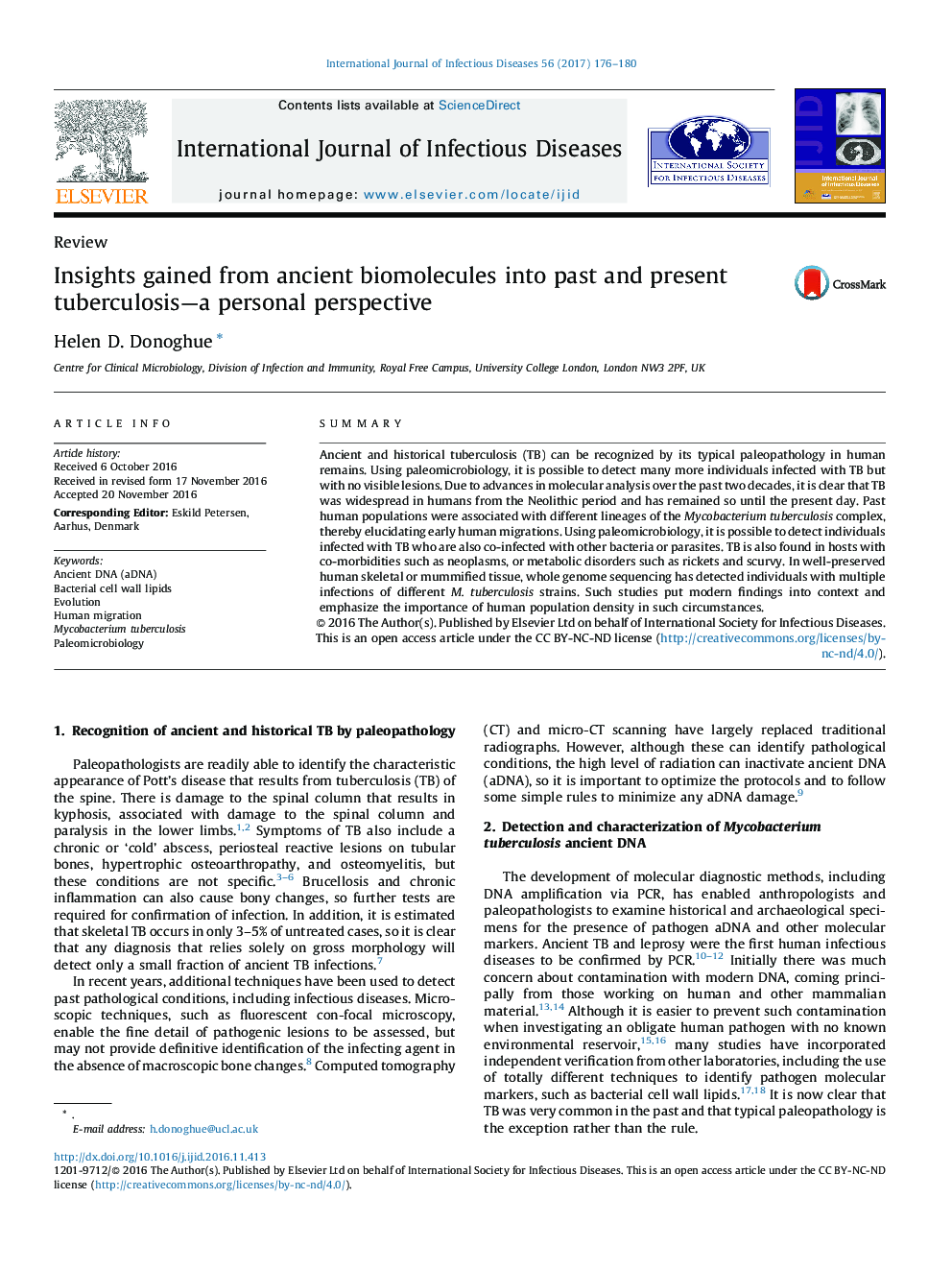| کد مقاله | کد نشریه | سال انتشار | مقاله انگلیسی | نسخه تمام متن |
|---|---|---|---|---|
| 5667579 | 1592037 | 2017 | 5 صفحه PDF | دانلود رایگان |
- The weak relationship between paleopathology and past tuberculosis (TB) infections is described.
- Detection methods for Mycobacterium tuberculosis ancient biomolecules are critically reviewed.
- The link between strains and lineages of M. tuberculosis and their human host is explained.
- Insights from ancient M. tuberculosis on our understanding of modern TB infections are made clear.
SummaryAncient and historical tuberculosis (TB) can be recognized by its typical paleopathology in human remains. Using paleomicrobiology, it is possible to detect many more individuals infected with TB but with no visible lesions. Due to advances in molecular analysis over the past two decades, it is clear that TB was widespread in humans from the Neolithic period and has remained so until the present day. Past human populations were associated with different lineages of the Mycobacterium tuberculosis complex, thereby elucidating early human migrations. Using paleomicrobiology, it is possible to detect individuals infected with TB who are also co-infected with other bacteria or parasites. TB is also found in hosts with co-morbidities such as neoplasms, or metabolic disorders such as rickets and scurvy. In well-preserved human skeletal or mummified tissue, whole genome sequencing has detected individuals with multiple infections of different M. tuberculosis strains. Such studies put modern findings into context and emphasize the importance of human population density in such circumstances.
Journal: International Journal of Infectious Diseases - Volume 56, March 2017, Pages 176-180
